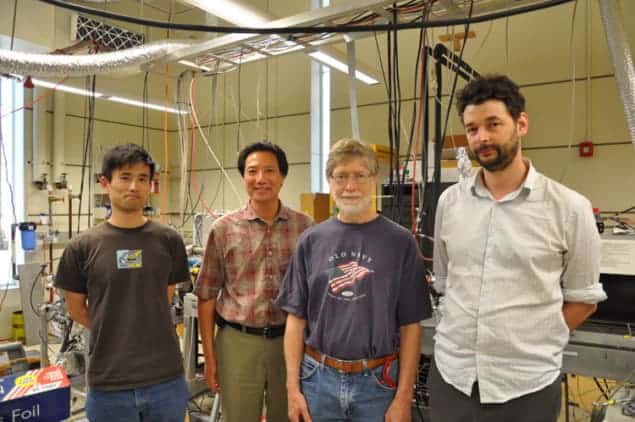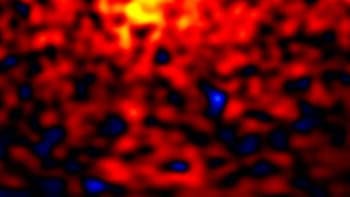
Physicists in the US have shown that positronium – a short-lived bound state of a positron and an electron – can be produced by firing a laser beam onto a silicon surface. Because the technique is highly controllable and operates over a wide range of temperatures, it could prove extremely useful in low-temperature experiments designed to look for tiny differences in the behaviour of matter and antimatter.
Positronium is of interest to physicists in part because it can be used to supply the positrons used to make antihydrogen atoms with well-defined quantum states. Antihydrogen is the antimatter version of hydrogen, consisting of a positron orbiting an antiproton. According to the Standard Model of particle physics, antihydrogen should have the same atomic spectrum as hydrogen. Any difference between the two would reveal an asymmetry between matter and antimatter that could explain why the universe we see is dominated by matter, even though equal quantities of matter and antimatter were thought to have been created in the Big Bang.
Positronium was discovered in 1951 by Martin Deutsch, who created it by stopping positrons in a gas. More recently, researchers have been studying how to create “atoms” of positronium in a controlled way in a vacuum by emission from various surfaces, including silicon.
In March this year David Cassidy and colleagues at the University of California, Riverside, published a paper (Phys. Rev. Lett. 106 133401) describing how they implanted a beam of positrons from a radioactive source into a silicon target and then heated the target in order to liberate positrons that had become bound to electrons from the silicon. However, they were surprised to find that the emitted positronium atoms did not have a broad range of energies, as would be expected if they had been thermally removed from a hot surface. Instead, they found that almost all of the atoms had the same energy of about 0.16 eV.
Binding with positrons instead of holes
The researchers concluded that electrons excited from the silicon’s valence band to its conduction band were being scattered into unoccupied surface states. Normally these electrons would bind with holes (electron absences) to form electron–hole pairs known as surface excitons, but if positrons are present then the electrons can instead combine with them to form exciton-like positronium atoms. It is this binding, say the researchers, which releases a well-defined quantity of energy and pushes the atoms away from the silicon surface.
Now, Cassidy and team have shown that the energy needed to generate these exciton-like states can be provided far more efficiently using laser light than it can simply by heating the sample. Just before implanting the positrons they shine green laser pulses onto the silicon and this substantially increased the flux of emitted positronium. They also found that with the laser beam switched on, this flux would remain significant even if the silicon is cooled to close to 0 K, something they were not able to show directly but inferred by plotting how the flux rose as they increased the temperature up to nearly 1000 K and then extrapolated back down towards absolute zero.
‘Imaginative piece of work’
According to Michael Charlton of Swansea University in the UK, this ability to generate significant quantities of positronium atoms even at very low temperatures makes the laser-based technique appealing for production of antihydrogen, because the combining of antiprotons and positronium must take place in very cold traps. “This is a really imaginative piece of work,” says Charlton, who is a member of the ALPHA experiment at CERN that in May revealed that it had trapped over 300 antihydrogen atoms, some for longer than 15 minutes. “Researchers in the field will take up this technique straight away.”
One of Cassidy’s colleagues, Allen Mills, says that positronium itself could in principle be used to test fundamental physics, for example by dropping a sample of the atoms into the Earth’s gravitational field to find out if, owing to matter–antimatter asymmetry, antimatter actually falls upwards. He also points out that his group hopes to create a positronium Bose–Einstein condensate, within which all of the atoms would exist in the same quantum state, meaning that they would all self-annihilate at the same time and so should generate a gamma-ray laser beam. He says that such a laser could potentially be used to provide the very high energy densities needed to ignite fusion reactions, but cautions that the roughly 10 million positronium atoms generated inside their silicon target is still only about a millionth of the number needed to generate lasing.
The research is described in Phys. Rev. Lett. 107 033401.



